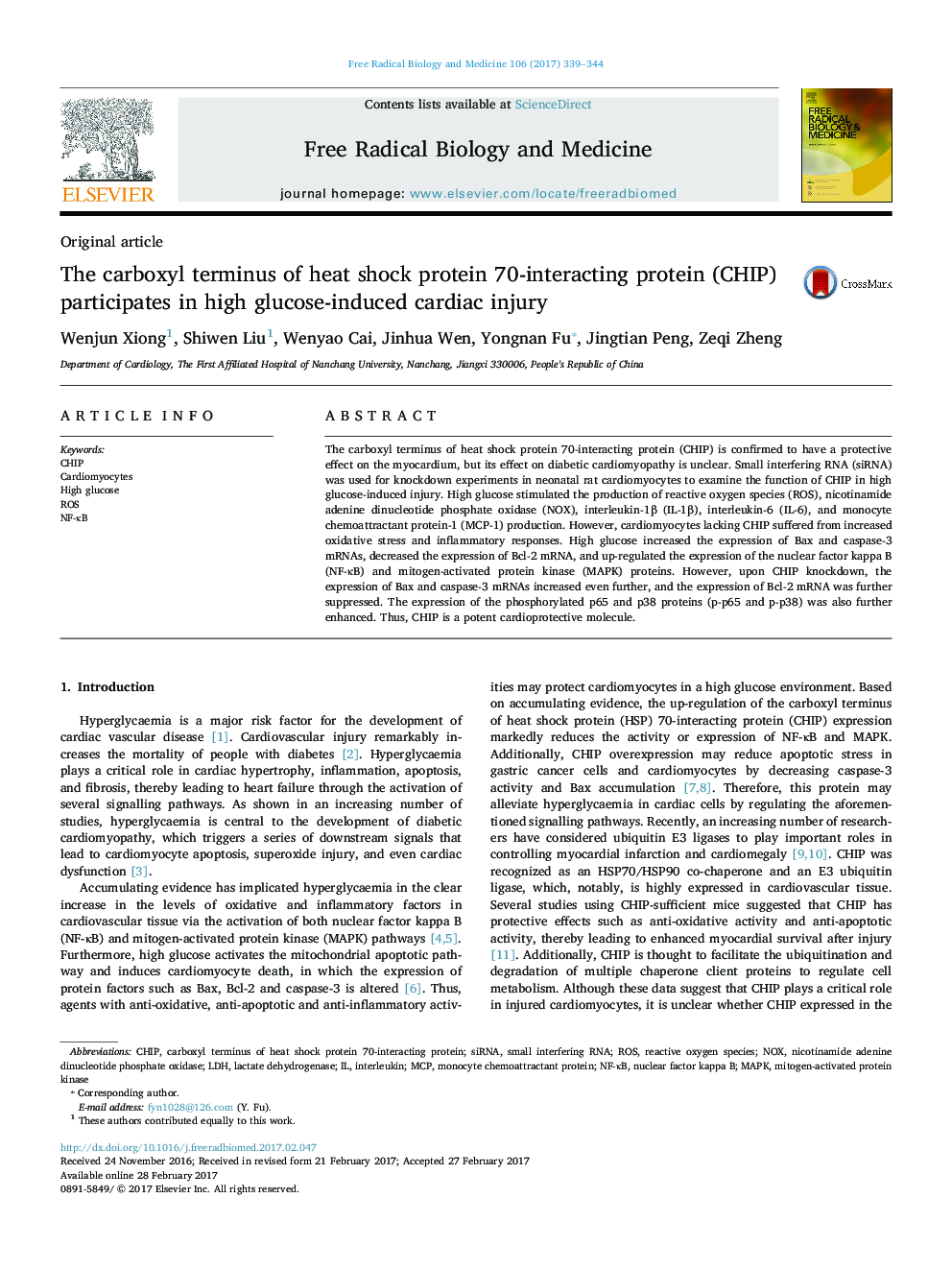| Article ID | Journal | Published Year | Pages | File Type |
|---|---|---|---|---|
| 5501791 | Free Radical Biology and Medicine | 2017 | 6 Pages |
â¢CHIP inhibits high glucose-induced cardiac injury.â¢CHIP plays an anti-oxidative and anti-apoptotic role against hyperglycaemia.â¢NF-κB and MAPK signal pathway is involved in high glucose-induced cardiac injury.
The carboxyl terminus of heat shock protein 70-interacting protein (CHIP) is confirmed to have a protective effect on the myocardium, but its effect on diabetic cardiomyopathy is unclear. Small interfering RNA (siRNA) was used for knockdown experiments in neonatal rat cardiomyocytes to examine the function of CHIP in high glucose-induced injury. High glucose stimulated the production of reactive oxygen species (ROS), nicotinamide adenine dinucleotide phosphate oxidase (NOX), interleukin-1β (IL-1β), interleukin-6 (IL-6), and monocyte chemoattractant protein-1 (MCP-1) production. However, cardiomyocytes lacking CHIP suffered from increased oxidative stress and inflammatory responses. High glucose increased the expression of Bax and caspase-3 mRNAs, decreased the expression of Bcl-2 mRNA, and up-regulated the expression of the nuclear factor kappa B (NF-κB) and mitogen-activated protein kinase (MAPK) proteins. However, upon CHIP knockdown, the expression of Bax and caspase-3 mRNAs increased even further, and the expression of Bcl-2 mRNA was further suppressed. The expression of the phosphorylated p65 and p38 proteins (p-p65 and p-p38) was also further enhanced. Thus, CHIP is a potent cardioprotective molecule.
